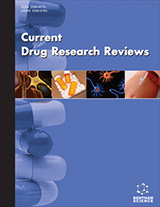Abstract
Background: Carotenoids are natural hydrocarbons that play an important role in photomorphogenesis, photosynthesis, photoprotection, development, and defense mechanism of plants. Carotenoids have good anti-oxidants and provitamin A contents with their additional colorant nature, which are indispensable to plants and human diets. Capsicum species are well known for their culinary uses worldwide; they are not only cultivated as vegetables but used in numerous medicinal preparations as well due to their medicinal aspects. This article aims to collect data on the beneficial aspects of capsaicinoids with a major emphasis on capsanthin.
Methods: In order to investigate the biological potential and therapeutic benefit of capsanthin in medicine, in the present work, scientific research data on capsanthin were collected from different literature sources and analyzed. The biological potential of Capsicum annuum in medicine was also investigated through literature data analysis of different scientific research work. Scientific data on capsanthin were collected from Google, Google Scholar, PubMed, Science Direct, and Scopus using the term capsanthin and capsicum in the present work. Detailed pharmacological activities of capsanthin were presented and discussed in the present work through scientific data analysis of research work. Analytical techniques for the separation, isolation, and identification of capsanthin were taken into consideration in this work.
Results: Scientific data analysis revealed the biological importance and therapeutic benefit of capsanthin and capsicum in medicine. Capsicum annuum is a member of the Solanaceae family, which is one of the most cultivated spices worldwide. Capsaicinoids are one of the main classes of phytochemicals found in chili peppers, i.e., Capsicum annuum, and are mainly responsible for the pungent and spicy flavor of chili peppers. Capsanthin is a crystalline red color pigment found as the main component of Capsicum annuum fruits during ripening. Capsanthin is also found in Lilium, Aesculus, Berberis, and Asparagus officinalis. Chemically, capsanthin contains a cyclopentane ring, 11 conjugated double bonds, and a conjugated keto group. Capsanthin is a powerful antioxidant, exhibits anti-tumor activities, attenuates obesity-induced inflammation, and raises plasma HDL cholesterol levels. Scientific studies have proven the pharmacological benefits of capsanthin in medicine as it is helpful in pain relief, cardioprotection, weight loss, and body temperature regulation. Moreover, it also has anti-inflammatory, anticancer, antioxidant, and antimicrobial activities. In the literature database, numerous extraction and isolation techniques have been documented for capsanthin. In addition, the analytical techniques and other bioanalytical tools for the isolation and identification of capsanthin were also discussed in the present article.
Conclusion: Medicinal importance and pharmacological activities of capsanthin were reviewed and discussed in this paper. This review aimed to highlight the literature on capsanthin in drug discoveries with their analytical development.
Keywords: Capsaicinoid, capsanthin, capsicum annuum, capsicum, carotenoid, medicinal importance, pharmacological activities, analytical techniques.
[http://dx.doi.org/10.1016/j.jtcme.2016.11.003] [PMID: 28725632]
[http://dx.doi.org/10.2174/2215083804666180416124949]
[http://dx.doi.org/10.12980/jclm.4.2016J6-96]
[http://dx.doi.org/10.12980/jclm.4.2016J6-161]
[http://dx.doi.org/10.1016/j.phytochem.2011.03.016] [PMID: 21514607]
[http://dx.doi.org/10.1016/j.jep.2010.08.034] [PMID: 20728519]
[http://dx.doi.org/10.1016/j.foodchem.2008.09.086]
[http://dx.doi.org/10.1016/j.appet.2012.05.015] [PMID: 22634197]
[http://dx.doi.org/10.1016/j.ijbiomac.2015.01.024] [PMID: 25616119]
[http://dx.doi.org/10.1016/j.jtusci.2015.06.011]
[http://dx.doi.org/10.1016/j.lwt.2014.04.051]
[http://dx.doi.org/10.1016/j.lwt.2015.06.042]
[http://dx.doi.org/10.1016/j.jff.2015.02.043]
[http://dx.doi.org/10.1016/j.scienta.2008.10.007]
[http://dx.doi.org/10.1016/j.foodchem.2016.01.041] [PMID: 26868549]
[http://dx.doi.org/10.1016/j.foodchem.2013.12.068] [PMID: 24491721]
[http://dx.doi.org/10.1016/j.jfca.2016.12.020]
[http://dx.doi.org/10.1016/j.foodchem.2012.01.062]
[http://dx.doi.org/10.3390/ijms140919025] [PMID: 24065101]
[http://dx.doi.org/10.1016/j.foodchem.2012.03.108] [PMID: 23442638]
[http://dx.doi.org/10.1023/A:1021206826750] [PMID: 12549764]
[http://dx.doi.org/10.3892/or.9.4.807] [PMID: 12066213]
[http://dx.doi.org/10.1016/j.synbio.2017.08.001] [PMID: 29318197]
[http://dx.doi.org/10.1016/j.foodres.2014.06.019]
[http://dx.doi.org/10.1016/j.jbiotec.2017.12.010] [PMID: 29247672]
[http://dx.doi.org/10.1007/BF00689702] [PMID: 2060084]
[http://dx.doi.org/10.3348/kjr.2007.8.3.216] [PMID: 17554189]
[http://dx.doi.org/10.1016/j.abb.2018.06.001] [PMID: 29885291]
[http://dx.doi.org/10.1016/j.jfca.2014.12.008]
[http://dx.doi.org/10.1016/j.appet.2017.02.025] [PMID: 28235621]
[http://dx.doi.org/10.1016/j.foodchem.2018.05.069] [PMID: 29884366]
[http://dx.doi.org/10.1016/j.scienta.2014.12.011]
[http://dx.doi.org/10.1016/j.foodchem.2017.06.098] [PMID: 28873562]
[http://dx.doi.org/10.1046/j.1525-1373.2000.22409.x] [PMID: 10806419]
[PMID: 15113052]
[http://dx.doi.org/10.2174/156802610792928103] [PMID: 20645919]
[PMID: 22287739]
[http://dx.doi.org/10.1016/j.abb.2011.05.004] [PMID: 21620794]
[http://dx.doi.org/10.1016/S0304-3835(01)00635-8] [PMID: 11566483]
[PMID: 14565083]
[http://dx.doi.org/10.4062/biomolther.2017.048] [PMID: 28449555]
[http://dx.doi.org/10.1017/S0007114509991309] [PMID: 19646292]
[http://dx.doi.org/10.1016/j.foodchem.2013.08.025] [PMID: 24128449]
[http://dx.doi.org/10.1016/j.cbi.2016.05.004] [PMID: 27154496]
[http://dx.doi.org/10.1016/j.foodchem.2016.12.008] [PMID: 28069124]
[http://dx.doi.org/10.1111/j.1750-3841.2006.00245.x] [PMID: 17995862]
[http://dx.doi.org/10.1155/2013/763758] [PMID: 24049664]
[http://dx.doi.org/10.1007/s11745-010-3449-5] [PMID: 20669052]
[PMID: 6654625]
[http://dx.doi.org/10.1159/000140462] [PMID: 18560226]
[http://dx.doi.org/10.2131/jts.3.127] [PMID: 39176]
[http://dx.doi.org/10.1093/jn/127.8.1475]
[http://dx.doi.org/10.1271/bbb.64.1096] [PMID: 10879492]
[http://dx.doi.org/10.5650/jos.ess17155] [PMID: 29367485]
[http://dx.doi.org/10.5650/jos.ess15118] [PMID: 26369598]
[http://dx.doi.org/10.1079/BJN2003842] [PMID: 12828795]
[http://dx.doi.org/10.1002/1521-3803(20020901)46:5<308:AID-FOOD308>3.0.CO;2-B] [PMID: 12428443]
[http://dx.doi.org/10.1039/c6pp00134c] [PMID: 27537377]
[http://dx.doi.org/10.1271/bbb.130033] [PMID: 23748767]
[http://dx.doi.org/10.1093/jxb/erm132] [PMID: 17728301]
[http://dx.doi.org/10.1016/j.fm.2010.07.010] [PMID: 20832686]
[http://dx.doi.org/10.3389/fpls.2015.00850] [PMID: 26528313]
[http://dx.doi.org/10.1186/s12870-014-0314-3] [PMID: 25403855]
[http://dx.doi.org/10.1039/C7CP02941A] [PMID: 28636682]
[http://dx.doi.org/10.1021/acs.jpca.7b08252] [PMID: 29090578]
[http://dx.doi.org/10.1016/j.foodchem.2016.09.200] [PMID: 27855882]
[http://dx.doi.org/10.1021/acs.jafc.6b03146] [PMID: 27598884]
[http://dx.doi.org/10.1021/acs.jafc.6b01706] [PMID: 27229653]
[http://dx.doi.org/10.1016/j.foodchem.2016.01.123] [PMID: 26920278]
[http://dx.doi.org/10.1080/00071668.2014.918583] [PMID: 24783946]
[http://dx.doi.org/10.1016/j.chroma.2013.09.074] [PMID: 24139505]
[http://dx.doi.org/10.1016/j.foodchem.2013.05.046] [PMID: 23871001]
[http://dx.doi.org/10.1007/s00394-013-0555-1] [PMID: 23820691]
[http://dx.doi.org/10.5740/jaoacint.12-179] [PMID: 23767359]
[http://dx.doi.org/10.1093/jxb/ers375] [PMID: 23314817]
[http://dx.doi.org/10.1016/j.chroma.2012.01.089] [PMID: 22377469]
[http://dx.doi.org/10.1177/1934578X1100601207] [PMID: 22312714]
[http://dx.doi.org/10.1093/jxb/err302] [PMID: 21948863]
[http://dx.doi.org/10.1021/jf203493k] [PMID: 21899264]
[http://dx.doi.org/10.1111/j.1750-3841.2010.01795.x] [PMID: 21535519]
[http://dx.doi.org/10.1002/jssc.200900311] [PMID: 19813226]
[http://dx.doi.org/10.1093/pcp/pcl033] [PMID: 17098784]
[http://dx.doi.org/10.3892/or.14.5.1385] [PMID: 16211314]
[http://dx.doi.org/10.1002/rcm.2104] [PMID: 16124038]
[http://dx.doi.org/10.1007/s00425-005-1566-9] [PMID: 16007452]
[http://dx.doi.org/10.1021/jf050119x] [PMID: 15941322]
[http://dx.doi.org/10.1021/jf034177z] [PMID: 12903955]
[http://dx.doi.org/10.1093/ps/82.3.395] [PMID: 12705399]
[http://dx.doi.org/10.1021/np0101447] [PMID: 11575972]
[http://dx.doi.org/10.1021/jf010338s] [PMID: 11513696]
[http://dx.doi.org/10.1021/jf000958d] [PMID: 11312889]
[http://dx.doi.org/10.1021/jf991243h] [PMID: 11032480]
[http://dx.doi.org/10.1021/jf9900985] [PMID: 10552685]
[http://dx.doi.org/10.1111/j.1750-3841.2010.01891.x] [PMID: 21535734]
[http://dx.doi.org/10.1016/j.foodchem.2013.09.060] [PMID: 24176331]
[http://dx.doi.org/10.1021/jf303091u] [PMID: 23050605]
[http://dx.doi.org/10.1016/j.plantsci.2010.04.014] [PMID: 20582146]
[http://dx.doi.org/10.1016/S0021-9673(96)00665-6] [PMID: 9025261]
[http://dx.doi.org/10.1093/pcp/pcs128] [PMID: 23008421]
[http://dx.doi.org/10.12980/jclm.5.2017J6-256]
[http://dx.doi.org/10.1016/j.jff.2017.09.001]
[http://dx.doi.org/10.1016/j.foodres.2017.03.036] [PMID: 28847427]































